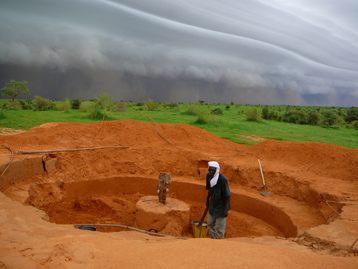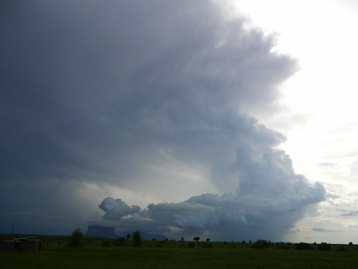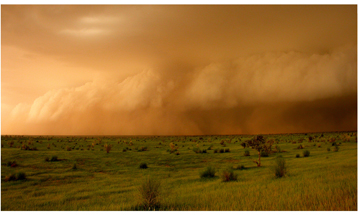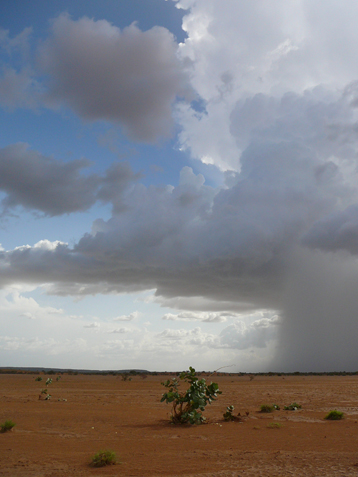Fuente: CNRS - All themes
Expuesto el: martes, 11 de septiembre de 2012 22:00
Autor: CNRS - All themes
Asunto: Daytime storms more likely to develop over drier soils
| Soil humidity affects the properties of the lower layers of the atmosphere, where clouds form. However, its role in triggering daytime storms is poorly understood. Now, a European team has discovered that there is a connection between soil humidity variations in a region and the storms that affect it. The researchers reached this conclusion by carrying out a highly detailed analysis of ten years' worth of satellite data for precipitation and soil humidity over the entire planet. For each 150 km x 150 km area studied, the scientists first searched their high spatial (a few tens of kilometers) and temporal (a few hours) resolution datasets for regions and dates where storms had developed. For these same places, they then noted the soil humidity in the hours preceding the storms and compared these values with those measured at the same time several tens of kilometers away. By using a statistical processing sytstem that corrects for characteristics specific to local climate, they observed that in continental regions, daytime storms develop more frequently over drier land surfaces surrounded by wetter areas than elsewhere. This trend is especially marked for the semi-arid soils of the Sahel and of Australia. In addition, the researchers tested several climate models used by the IPCC on a global scale. They discovered that the simulations carried out cannot reproduce the phenomenon observed by satellites. This defect is likely to flaw scenarios for the development of drought obtained using such models. In order to shed light on continental climate change at the regional scale, it would therefore be important to take greater account of this phenomenon in models.
© Françoise Guichard and Laurent Kergoat / CNRS Arrival of a squall line (some storms sometimes form a front that can be hundreds of kilometers long, called a squall line).
© Françoise Guichard et Laurent Kergoat / CNRS Storms developing
© Françoise Guichard et Laurent Kergoat / CNRS Arrival of a squall line (some storms sometimes form a front that can be hundreds of kilometers long, called a squall line).
© Françoise Guichard et Laurent Kergoat / CNRS Storms developing Notes: 1 Storms develop more often during the day than at night. References: Afternoon rain more likely over drier soils. Taylor C. M., de Jeu R. A. M., Guichard F., Harris P. P., Dorigo W. A., Nature, on line 12 September 2012.
|




